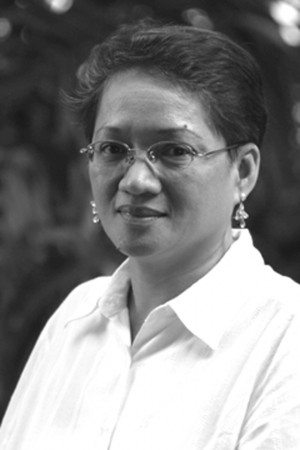
Malou Apalisok
The first month of the New Year is always a hectic period for the Church in Cebu because of the annual religious festivities in honor of the Santo Niño.
But this year, the Cebu Archdiocese will have its hands even fuller with the announcement that the National Conference of Seminary Formators will be held in Cebu City immediately following the fiesta celebration.
The conference takes place from January 22–26 and is expected to draw some 400 seminary educators from all over the country including participants from Asia-Pacific and a Vatican representative. Venue is the IEC Pavilion.
The seminary formators conference will then segue to the Catholic Bishops Conference of the Philippines CBCP 116th plenary assembly which happens from January 27–29.
Archdiocesan officials led by Archbishop Jose S. Palma will need to roll up his soutane’s sleeves, in a manner of speaking, in attending to these very intense and demanding gatherings.
The seminary formators conference in Cebu is significant because it is closely connected with a major Church concern, namely, vocations.
Unlike in North America and Europe where vocations have dangerously dwindled to almost zero, priestly vocations in this part of Asia appear to be on a steady course.
I recall that at one time, the late Cebu Archbishop Ricardo Cardinal Vidal was elated to know that local seminaries enjoy brisk admission.
I’m not sure if this trend has continued but if the ordination of three new priests on New Year’s Day led by Archbishop Palma himself is any indication, the discourse of seminary formators will be animated by plenty of local vocation stories.
This would be in sharp contrast to the prevailing crisis in vocations which has plagued the Church in the 1970s.
Although it had recovered between 1978 and 2012 especially during the pontificate of Pope John Paul II stretching to the brief regime of Pope Emeritus Benedict XVI, vocations have been declining in North America and especially in Europe.
Apparently, the huge popularity of Pope Francis has not drawn young people to the service of the Church. The dearth in vocations has amplified the role of the laity in the Church.
* * *
The Sinulog fever reaches its peak this week and human traffic around the Basilica del Santo Niño will be a major challenge for many people without exception. I used to attend the nine-day Novena Masses but when I contracted pneumonia after attending the fluvial procession in 2013, I have limited myself to attending only a few Masses in the Pilgrim Center.
This is in obedience to my doctor who told me I contracted the so-called community-acquired pulmonary disorder. The RX was for me to avoid huge crowds and boost my immunity through healthy diet and sufficient rest.
I have no problem with that except that I usually mark the celebration with the traditional Sinuog dance together with other pilgrims as my own fervent offering to the Holy Child.
Thankfully, the Casa Gorordo Museum of Cebu has been sponsoring an annual program that aims to preserve and promote the historical concept of the Sinulog dance through lectures and the traditional Sinulog dance.
“Sinug or Sinulog: Exploring the two dance forms” happens this afternoon at the Casa Gorordo Museum and features resource speakers who will lecture and demonstrate the traditional Sinug dance in relation to the contemporary Sinulog mardi gras.
The talk will also feature the Turang dance company led by Carol Diola.
I have always argued that save from the lavish costumes and slick choreography as our period’s contribution to the prayer dance, nothing much has changed since the first Sinuog, the term used by old timers who had graced the event in pre-war Cebu. Oral tradition has it that this was the time when the Basilica del Santo Niño was situated near the shoreline.
Sinuog referred to waves upon waves of pilgrims brought by the suog, or sea-current to the center of population. I understand the historical context will be emphasized once again during today’s Casa Gorordo Museum talk.
How apt that the CGM hosts this annual event which not only commemorates the colonial-period celebration but also the impact of the late bishop Juan Gorordo who used to live in the casa bella in the 1880s with his family.
Every year they gather for the feast with the prayer-dance ritual as the center of the celebration. Household members and their immediate kin participate, among them Estelita “Inday Titang” Diola.
As a girl of seven years in 1936, Titang would go with her family to Casa Gorordo upon the invitation of the bishop’s nieces, Cesarea “Charing” Revilles and Telesfora “Teleng” Gorordo.
Along with 20 to 25 people, they performed the Sinuog before the image of the Infant Jesus enthroned in an altar bedecked with fresh flowers.
Vocal prayers of praise, atonement and thanksgiving to the Almighty were said in Spanish, the same ritual that Inday Titang’s ancestors did in earlier times and which continues to this day.
After her passing in 2013, she bequeathed the beat to her niece, Carol Diola.
What devotees and pilgrims did in Church grounds and in courtyards of prominent families in pre-war Cebu, we now do in the city streets.
Kudos to Casa Gorordo Museum for preserving the genesis of the dance prayer through an annual program that keeps the faith tradition alive in our hearts and minds.
Pit Senyor!